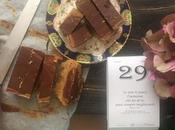Stromboli A signpost on the road leading to the church warns that it takes 57,842 steps to climb up to the crater, but you’ll not easily forget what you see when you arrive there – for the warm heart of this ancient volcanic island still pulsates with energy. Any visit here must start with the impressive crater: it is, in fact, a walk that requires little effort – and even less so in the company of the volcanologists of Magmatrek (0039 090 986 5768;magmatrek.it), who share their fascinating stories of fire and lava. The tour departs from Piazza San Vincenzo in the late afternoon, just as the streets are coming back to life after the afternoon siesta.
The beautiful panorama of this volcano can also be viewed each morning from the wooden-framed windows of the Locanda del Barbablù (090 986118; barbablu.it), a hotel with six unique rooms next to the house where Ingrid Bergman stayed, or from the Osservatorio (Punta La Bonzo; 090 986360), a restaurant at the top of the promontory, some 1,300ft above sea level – and a perfect place for a romantic candlelit dinner. The best way to get to the Osservatorio is by the classic Ape car, the little three-wheelers that clamber slowly up, breaking the silence of the narrow alleys with a growl of the engine.
The Punta Lena is another restaurant famous for its spectacular views, not to mention its soup of rockfish and grouper (via Marina 8; 090 986204). After dinner, the place to go is the Tartana Club, which has three verandas overlooking the black beach of Focogrande (via Marina 33), or Bar Ingrid, the historical haunt decorated with black-and-white photographs of the director Roberto Rossellini, who made his neo-realist masterpiece, Stromboli, on the island, and where the coffee is prepared in the traditional style. The atmosphere is also authentic in Piscità, the oldest part of the island, and Ginostra, a village perched on the western coast that can be reached by boat. It has the smallest port in the world – a place where time seems to have stood still.
Procida Following the Mediterranean northwards, there’s another secluded gem in the azure sea: the island of Procida. Just off the coast of Naples, it has all the simplicity of a fishermen’s village, perfect to escape from the jet-set atmosphere of Capri and the teeming crowds on Ischia.
 You can stroll through orange and lemon groves in the village of Chiaiolella or the hamlet of Marina della Corricella, a magnificent example of 17th-century popular architecture, where the houses form an amphitheatre around the bay and picturesque arches, flower-decked balconies and terraced gardens lead down to the sea. Stop in at the Abbey of San Michele Arcangelo, a late-medieval Benedictine convent housing a curious collection of seafaring photography which acts as a tribute to the traditions, superstitions and religious beliefs that are still very strong among the local people.
You can stroll through orange and lemon groves in the village of Chiaiolella or the hamlet of Marina della Corricella, a magnificent example of 17th-century popular architecture, where the houses form an amphitheatre around the bay and picturesque arches, flower-decked balconies and terraced gardens lead down to the sea. Stop in at the Abbey of San Michele Arcangelo, a late-medieval Benedictine convent housing a curious collection of seafaring photography which acts as a tribute to the traditions, superstitions and religious beliefs that are still very strong among the local people.
Explore the narrow village streets to find interesting designer shops and boutiques, such as the one run by Creje – with its jewellery, fashion and homeware – converted from an old fishermen’s grotto, or the boutique of the artisan designer Dina Tramontano, who makes original earrings using fine yarn and cotton. Narrow footpaths lead down to secluded beaches such as Pozzo Vecchio or Baia degli Innamorati.
There are holiday rental homes and some hotels on the island: a particularly good combination of the two is La Suite, a hotel with shady verandas, soft, white curtains, a cooling swimming pool and a large Mediterranean garden (081 810 1564; lasuiteresort.com). You can also take in the sea breeze by securing a table at La Conchiglia restaurant, on Chiaia beach (081 896 7602; laconchigliaristorante.com).
As the sun sets, it is worth making the effort to climb up to Terra Murata, the old village marking the highest point of the island, to admire the view of the Gulf of Naples and the neighbouring islands, lit up by the last rays of sun that turn the water a blazing red.
Basilicata The south of Italy has many other wonderful surprises, not just on the islands of Stromboli and Procida, but also on the mainland. One of these is in the Basilicata region, along a coast that flanks 20 miles of the Tyrrhenian Sea. The village of Maratea, with its narrow alleys, paved streets and embellished houses, is an ideal spot for spending a honeymoon, just as Sofia Coppola and Thomas Mars did last year. It is a pearl in the Mediterranean that remains relatively unknown. Take a plunge into the crystal-clear blue water lapping the small pebble beaches of Castrocucco, Acquafredda, Cersuta and Fiumicello.
The port is also a fantastic sight, with small fishing boats that sail off every morning to bring in the overnight catches of cod, rockfish and sole. This freshly caught fish arrives straight from the market on to the tables of the Taverna Rovita, one of the oldest restaurants in Maratea, accompanied by home-grown chargrilled peppers (0973 876588;tavernarovitamaratea.it).
A veranda at the Santavenere, the most luxurious hotel in Basilicata, is the perfect spot for some quiet contemplation as you lose yourself in the vast horizon of the sea. This is another small hidden treasure but has hosted some famous guests since the Fifties, including Renato Guttuso, Anita Ekberg and Soraya (0973 876588; hotelsantavenere.it).

From Maratea, you can make your way along past the immaculate statue of Christ, reminiscent of Christ the Redeemer in Rio, which dominates the skyline at 70ft high, and on to the Roman site of Grumentum and the ancient villages of Rivello, Lauria and Aliano. Carlo Levi was inspired during his time of exile in Aliano to write his memoir, Cristo si è fermato a Eboli. Then there is Craco, a ghostly village set in the badlands, abandoned about 50 years ago and later chosen by Mel Gibson as a location for scenes in his film The Passion of the Christ.
The Salento The hot summer is the ideal time to get to know the real soul of the Salento, in Puglia. The sun, the dazzling white farmhouses, the twisted trunks of the olive trees and, in the evening, the concert of the cicadas. This is the “heel of Italy”, an archaic and captivating place that is home to rustic villages built in local limestone. In places such as Nardò and Galatina, town houses’ façades are embellished by friezes, coats of arms, floral patterns and mythological creatures. One of the small selection of suites at Palazzo Guarini, in Scorrano, makes the perfect place to stay. Converted from a duke’s residence, the suites are in gardens surrounded by orange and lemon trees and roses (0836 465047; dimoreducaguarini.it).

Villa Sticchi, Santa Cesarea Terme, Salento First and foremost, this is a land dominated by the sea, where there is a beach perfect for everyone’s taste; from the sandy dunes of Campomarino di Maruggio to the centuries-old junipers of Torre Canne, or the coast of Porto Cesareo. You can go diving in Porto Cesareo’s protected marine area and explore vast caves, grottos and archaeological remains from Roman times. The white shrimps of Leuca and the red scampi of Gallipoli come from local seas that are rich with fish. The best seafood can be found at Angeli Ribelli , a restaurant in Otranto where the owner himself brings in the catch of the day, which his wife then cooks (Via Immacolata 20; 0836 804141).
The Salento soil is also very fertile, and you can buy fine produce from the surrounding farms and wineries. A local favourite is negroamaro, one of the best red wines from the region which, after spending some years in oblivion, is now undergoing a revival in popularity across Italy. This is thanks to wineries such as Leone De Castris, in Salice Salentino, where you can taste wine in the 17th-century cellar (0832 731112;lnx.leonedecastris.com).
Ventotene The island of Ventotene, less than two miles long and only 2,600ft wide, proves that rich historical discoveries can be made even in the smallest and remotest places. Ventotene, off the coast north of Naples, was a favourite place of the Greeks and the Phoenicians. The Emperor Augustus sent his rebellious daughter, Julia, there, and you can still see the ruins of the villa and pool to where she was banished. Still today, the people who venture this far do so in search of peace and tranquillity. Sailing enthusiasts and scuba divers love its windswept coast and its clear waters, safeguarded by the Marine Area Protection authorities of the Pontine Islands.

The first thing that catches your attention when you arrive is the excavated Roman port, followed by the pastel-coloured houses that date back to the Bourbon period and the church dedicated to Santa Candida, the patron saint of the island. September 20 marks the festival of Santa Candida, and the whole place comes to life with religious celebration and picturesque processions, while musical performances and paper-balloon races are held in the village square. In the evening, a tremendous fireworks display rounds off the celebrations.
You can spend time chatting to the hospitable locals, such as Pina, who runs the shop Un Mare di Sapori and has devoted herself for many years to growing lentils, one of the island’s crops. This small, round pulse owes its rich and bold flavour to the sandy and clay-heavy soils in which it grows.
Not far from here is the Antico Forno. Since the Fifties, it has been run by the Aiello family, who make taralli, a local bread moulded into ring-shaped cakes. The real queen of baking, however, is Anna Impagliazzo, the chef of Il Giardino. This is the island’s most famous restaurant, whose speciality is a delicious wheat pie flavoured with oranges (0771 85020; ilgiardinodiventotene.it). For connoisseurs there is also Villa Iulia, an 18th-century home that has been converted into a hotel, next to the beach of Cala Nave (0771 854038; hotelvillaiulia.it).
San Pietro While locations such as Ventotene are glorious but still relatively undiscovered, there are Italian islands such as Sardinia which are known all over the world. Still, even there, unspoilt places are waiting to be unearthed. Some of the most beautiful can be found on the island of San Pietro, off the coast of south-western Sardinia. Carloforte, its main town, is made up of little architectural treasures, steps, narrow alleys and old houses, all of which give the place its own special ambience. You can go fishing or diving, even spending days on board wooden fishing boats to learn the secrets of the trade from the fishermen. Or you can simply take a walk around the LIPU Oasis (Italian League for the Protection of Birds) and spot birds such as the Eleonora’s falcon, which makes the coastal rocks its nesting place.
In the summer, when the first rays of sun appear, there is nothing better than relaxing on the sand and pebble beaches of Girin and Punta Nera, or venturing to Cala Fico and Capo Sandalo, where you will find a charming old lighthouse. You can also reach the bay of La Caletta, where the Italian ritual of the aperitif is played out while waiting for the spectacular sunset. Here lazy days pass slowly, perhaps in the company of Natalia Lapicca, a native of Carloforte and a guide who can advise you, among other things, on the best restaurants on the island (sanpe.it).
Choosing is not easy, as all are very good; many offer dishes that combine rich flavours and ingredients from both Europe and Africa. Sample giant platters of couscous with vegetables, slow-cooked broad-bean soups and fresh pastas such as cassulli, dressed with basil, tomatoes and a delicate drizzle of oil. These can be best enjoyed at theTonno di Corsa (0781 855106; tonnodicorsa.it).
Pay a visit, too, to the Rossi di Mare workshop, home to two artisans who carry on the time-honoured craft of turning raw coral into simple trinkets and jewellery. The same simplicity has been embraced by the Poecylia, a secluded hotel with a handful of suites, created by a famous deep-sea photographer. It is a wonderful place – an oasis of calm amid the buzz of the Mediterranean (333 762 9790; poecyliaresort.it).
Portofino This has always been a place for the affluent and the jet set, but the town reveals its wild and solitary soul to those who really look deeper and venture out to its neighbouring villages.
Here you will find perfumed orchards, ancient villas and paths cut out of the rock, such as the spectacular trails that go through the Regional Natural Park of Portofino (0185 289479; parcoportofino.it). These are age-old paths made from pavings or packed earth, that wind their way up to places of worship such as San Fruttuoso, San Nicolò or La Cervara. Starting out early in the morning, you can tackle l’Anello Alto (the High Ring). Despite its name, this is an easy walk that leads to Gaixella and then through the Pietre Strette woods. You will pass carpets of ivy and flowers, chestnut woods and undergrowth thick with brambles, with a soundtrack of squirrels rustling for pine cones and the song of blackbirds and cuckoos.
Re-energise yourself with some of the local focaccia, the original “fast food” of the Italian Riviera, such as the one made by the Moltedo bakery in Recco, served with cheese and baked in a wood-fired oven (via B Assereto 15). At La Cucina di Nonna Nina, in San Rocco di Camogli, every day the chef, Paolo, makes bread and pasta that goes magnificently with the fresh basil used for pesto (0185 773835;nonnanina.it).
For a refined and tranquil atmosphere, check in at Villa Rosmarino(0185 771580; villarosmarino.com), which has as its motto: “This house is not a hotel”. There are no numbers on the doors or keys to the rooms, nor any concierge, lobby or restaurant, but you can stay in one of the six delightful suites of this former private home, built in 1907. In the summer you can visit the beach or pick a book from the extensive library, sit out on the veranda overlooking the Paradise Gulf, and watch as the sky lays its blue mantle over the Mediterranean. (fonte: telegraph.co.uk)







